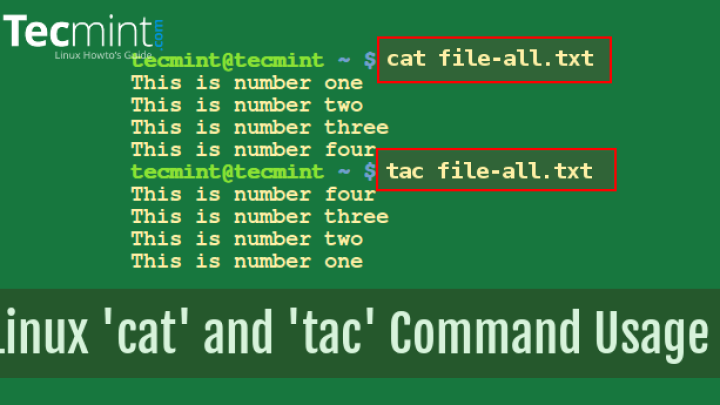Introduction to Linux cat Command
cat command in Linux is basically a short name of “concatenate”, and is frequently used to create single or multiple files, view its content, concatenate them, and display their output on screen. Also, the output can be saved in a specified file as well. So, this article brings you 12 basic examples of Linux cat command to describe how cat command can be used in Linux terminal.
Syntax of cat command in Linux
cat [OPTION] [FILE]…
Options available to use cat command
To view all available options to use cat command in Linux, run “cat –help” in terminal.

Basic examples of Linux cat command:
1: Viewing contents of a file named servonode.txt
cat servonode.txt
2: Viewing multiple files, say servo.txt, and node.txt
cat servo.txt node.txt
3: Displaying contents with line number
cat -n servonode.txt
4: Create a file with cat command
cat >servnode.txt
5: Copying content of one file to another (From servo.txt to node.txt)
cat servo.txt > node.txt
6: Suppressing empty lines in servonode.txt
cat -s servonode.txt
7: Append content of servo.txt to the end of node.txt
cat servo.txt >> node.txt
8: To display content of a file in reverse order (Using tac command)
tac file_name
9: Highlight the end of line in servo.txt
cat -E “servo.txt”
10: Open dashed files like -servo.txt
cat - - “-servo.txt”
11: Displaying file content with “Show More” (For files with a lot of content)
cat “file_name” | more
12: Merge contents of servo.txt with node.txt and create a new file merged.txt
cat “servo.txt” “node.txt” > “merged.txt’

Nishant Verma is a senior web developer who love to share his knowledge about Linux, SysAdmin, and more other web handlers. Currently, he loves to write as content contributor for ServoNode.